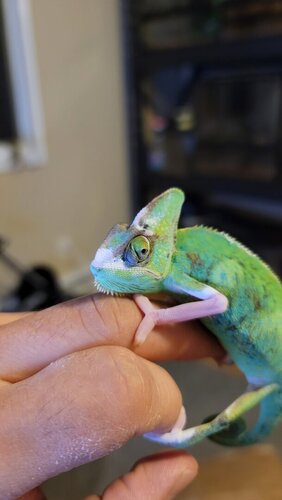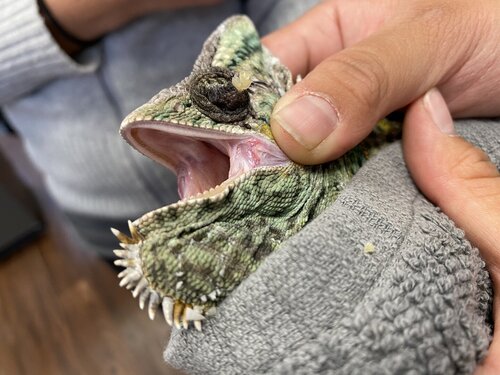I'm not going to post all the husbandry info because it is unknown except the Chameleon was kept on Rapashy Calcium Plus with every feeding. I kept a veiled chameleon years ago and I believed I used Reptical Without D3 for most feedings, with D3 once a week, & a multi vitamin once a month. This was years ago before Rapashy Calcium Plus was a thing and the UVB bulbs were nowhere near as good. I use Calcium Plus every feeding with dart frogs because I was told it has far less D3 than the older products I used to use on my Chameleon. Not sure how this applies to chameleons which is why I am here asking. The UV light was and still is a Zoomed T5HO 5.0.
Attached is a picture which shows the front of the eyes swollen. This definitely does not look normal to me. Only one eye is displayed in the photo but both eyes are equally showing the same symptoms. Any idea? Taking to a reptile vet is out of the question as the only good one around has a 1.5 month waiting list. I have brought other reptiles in the past and it never helped.
Unless better ideas are provided I am going to give him plain calcium no D3 and see if conditions improve. He does eat extremely well and moves around.
Attached is a picture which shows the front of the eyes swollen. This definitely does not look normal to me. Only one eye is displayed in the photo but both eyes are equally showing the same symptoms. Any idea? Taking to a reptile vet is out of the question as the only good one around has a 1.5 month waiting list. I have brought other reptiles in the past and it never helped.
Unless better ideas are provided I am going to give him plain calcium no D3 and see if conditions improve. He does eat extremely well and moves around.
Attachments
Last edited:








